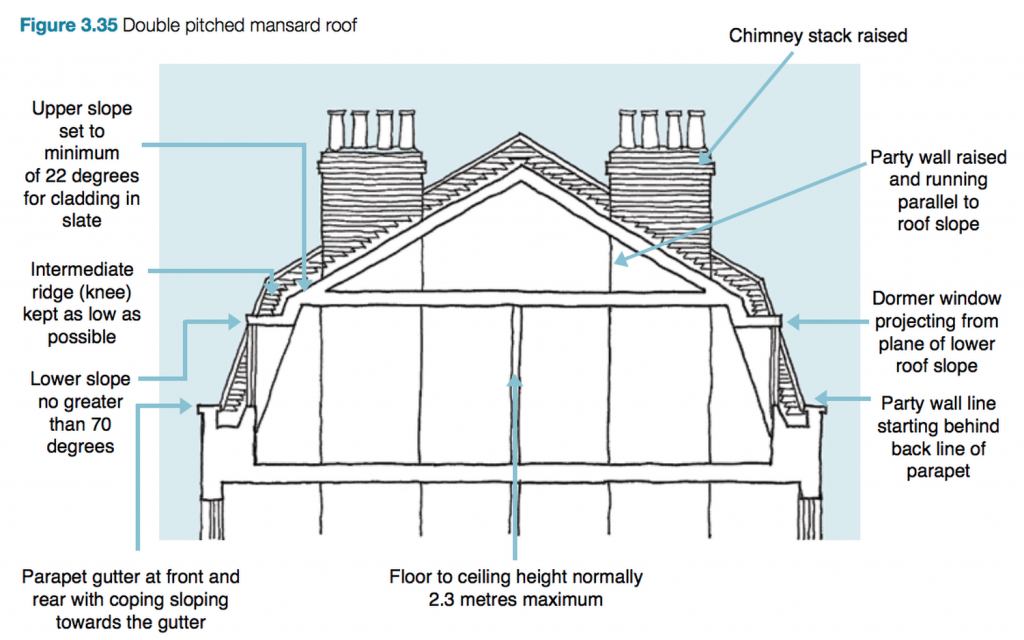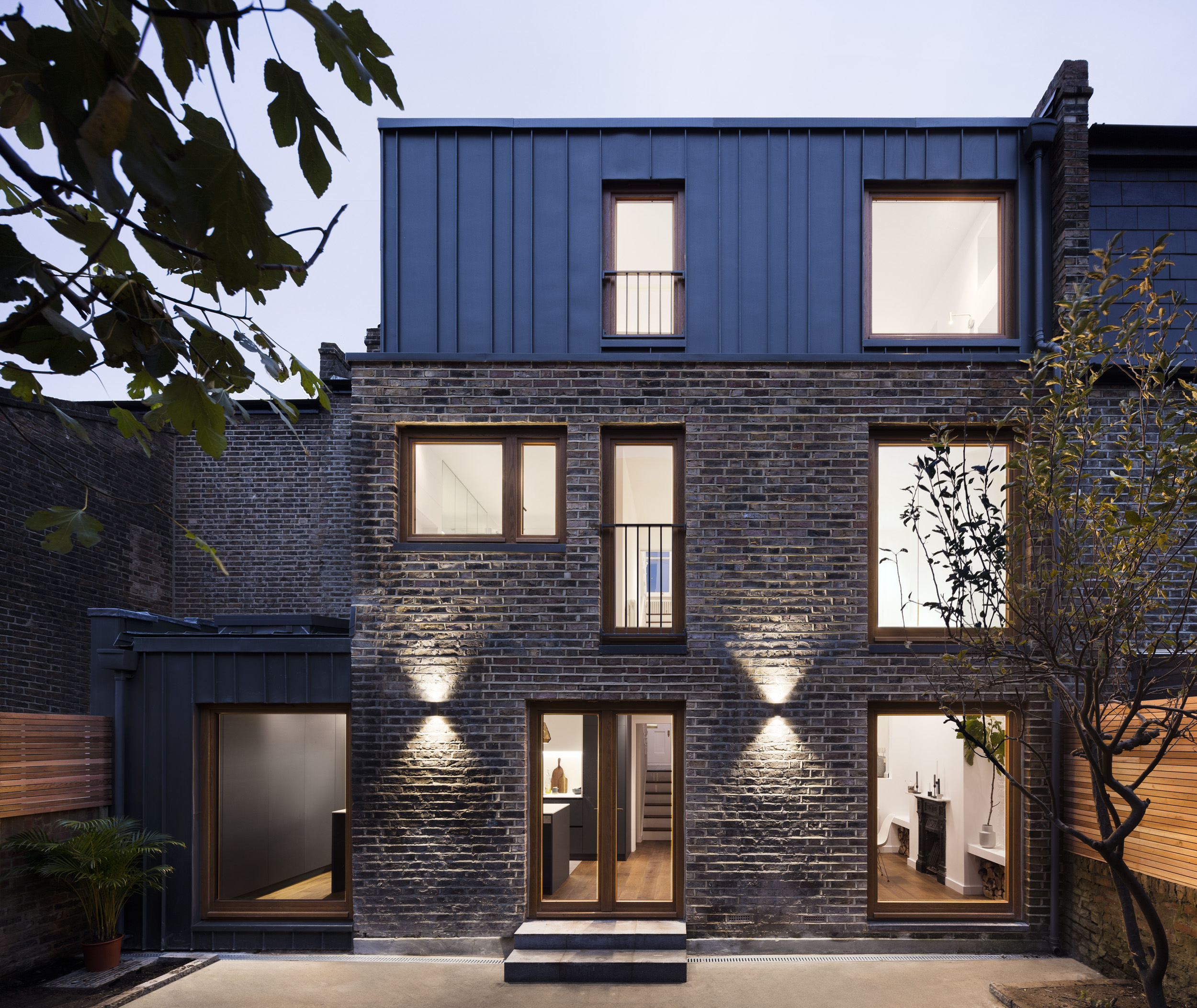Extension design above by Amos, architect from Islington, London. See more and shortlist them for your home project here.
You may be considering applying for planning for a mansard roof extension if your existing loft space is not high enough or the wrong shape for a straight conversion or dormer extension.
What is a mansard roof extension?
Mansard roofs are most common on terraced Victorian and Georgian properties, particularly in London. Often, the existing roof will be inverted, so the roof is a valley ‘V’. To make a loft extension workable in this instance, it will be necessary to remove the existing roof, build up the existing party walls, and build a new structure set back from the front wall, with the front and rear walls sloping inwards. This is known as a mansard roof extension.
How to get planning for a mansard roof extension
National planning guidance concentrates on general loft extensions and conversions, where dormers are more commonplace. A dormer roof extension can often be done without full planning permission, under permitted development rights. A mansard roof extension can represent a much more significant change however, where full planning permission will almost certainly be required.
Check guidance notes from your local council
If mansard roof extensions are common in your area, your local council may have produced specific planning design guidance on mansard roofs, aimed at architects and homeowners. Many of the London boroughs have produced a residential design guide supplement as part of their local development framework. Here are some commonly found guidance notes:
- Mansard roof extensions are often not acceptable where no other houses in your row have been extended, and where the roof line remains unbroken.
- Depending on the size and character of the existing building a ‘flat topped’ mansard roof is more likely to be acceptable, which keeps the overall height to a minimum. See illustrated examples of a ‘flat topped’ and a ‘double pitch’ mansard roof below, taken from the supplementary guidance from Hackney council.
- There will usually be a maximum internal floor to ceiling height allowed e.g. 2.3m.
- The front and back ‘walls’ of the roof extension will often have a maximum pitch allowed e.g. 70°, which should be set back from the existing elevations with a gutter separating them.
- The windows should be proportional/bear relationship to the ones below.
- Generally you will need to use materials to match or be sympathetic to the existing building. This is a rule that applies to all house extensions.
- If it’s a valley ‘V’ shaped roof (also known as a ‘butterfly’ or ‘London roof’), the existing ‘V’ profile of the rear elevation will usually need to remain expressed.
Flat topped mansard roof

Double pitched mansard roof

Ask your architect
Your architect is the best person to ask about applying for planning for a mansard roof extension. They will weigh up guidance from the local council and, through their application, they will aim to present the best case for your design and why it should be acceptable to your local council. Sometimes it can seem that the rules are very black and white but with a talented architect in your corner, you will be in the best position to get the result you want.
Here at Design for Me we can match you with the best design pros for your project and arrange initial consultations for free. Use the form below to get started and we’ll be happy to help!
Emily Design for Me

